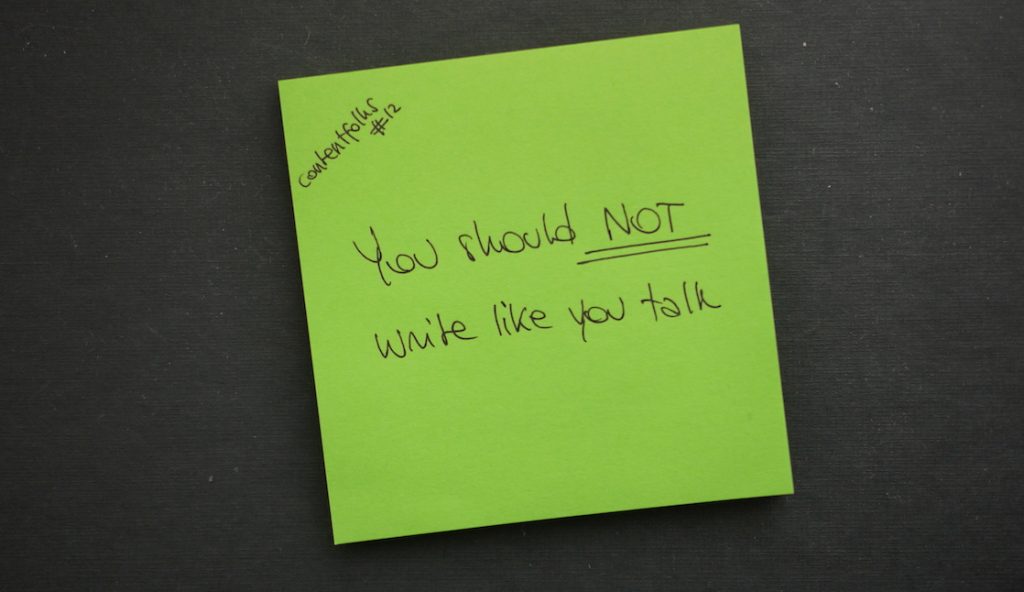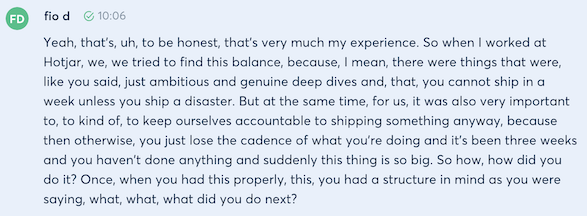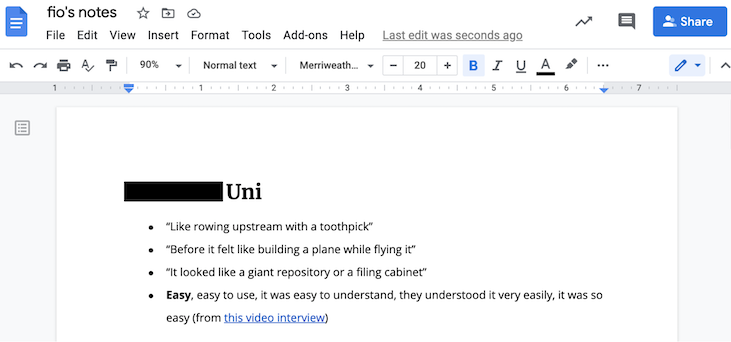
Welcome to contentfolks—a fortnightly newsletter with short lessons & ideas about content that makes a difference, sparks action, and truly serves its audience. Thank you for being here!
Hey 👋
If you’re a content-making person, I’m pretty sure you’ve already been given the #1 piece of copywriting advice out there: “write like you talk.”
Well, I disagree!
I don’t think you should write like you talk, at all 😈
Just to be clear: I know that “write like you talk” is not meant to be taken literally. Nobody wants to see a list of the uhs and ahs that pop up in our speech; plus, we’re not that great at communicating complex ideas in clear and linear sentences—if you’ve ever had one of your conversations transcribed, you know you don’t want your writing to look anything like this:

The emphasis is on the wrong person
“Write like you talk” usually means: try to sound like an actual human being. Avoid jargon and inflated vocabulary, don’t write ‘for the purpose of’ when you can use ‘to’, don’t use over-stylised sentences, stay away from cliches, be natural, etc.
There’s nothing wrong with this advice—but the situation’s a lot more nuanced than that. If you think about it, you don’t just have one way to talk to people: you don’t talk to a friend like you talk to a stranger, and you don’t speak to your accountant like you speak to a 15-year-old, either. Your vocabulary choices, tone, level of detail are contextual and depend on who you’re having a conversation with.
In everyday speech, you tailor spoken content to your audience.
Your writing should do exactly the same.
Write like YOUR AUDIENCE talks
“Write like you talk” puts the emphasis on the wrong person (you), while the focus should really be on the people you’re writing for.
Who is your audience? Why are they here? What do they want? If you follow your perspective and stick with how you talk, you run the risk of misaligning your content with their needs. You might bore the expert and overwhelm the beginner, or come across as untrustworthy for using the wrong vocabulary and tone.
“Write like your audience talks” is stronger advice: it puts the emphasis back where it should have been all along.
💡 A practical example 💡
This year, I’ve been working in edtech (educational technology) and crafting content for university educators. It’s an audience who lives in a world of flipped classrooms, pedagogical frameworks, high-engagement practices, and a lot of other things I have no practical experience of.
No matter how great I may be with words, if I don’t first understand these people’s perspective, the world they inhabit, and the language they use, I cannot possibly create good content for them. At best, I can create generic stuff that is well written—which is not what our job is about.
Learn how YOUR audience speaks in 5 steps
Here’s the five-step approach I use to stop writing like I talk and start writing like my audience does:
- I usually create a google doc that will be my main source of truth: all my observations, links, screenshots, and findings are collected there
- I look for product reviews, customer support threads, customer feedback, recorded interviews, and anything that has captured the voice of the customer
- I go through all of them, noting down in my doc how people described the product, the most common phrases and adjectives they picked, how technical they sounded, how formal or informal
- After 2-3 weeks, I start running customer interviews → by that point I have a pretty good understanding of the context and main terms, so I focus on learning what a customer’s average workday looks like, what challenges they face, how the product fits into it, and how they speak about all of this (this is where I discovered “hybrid teaching within a flipped classroom” is something that real humans say out loud 😅)

5. With all of the above, I have a pretty clear idea of the level to pitch my content at and what familiar terms and phrases to use—so I finally start writing and editing in a way that tells my audience “I know you. I get you. I can help you out.”
“Write like you talk” is well-meaning advice, but it focuses your attention on the wrong person. “Write like your audience talks and make an effort not sound like a robot while you’re at it” is way more accurate—but I see why it’s not as catchy 😉
